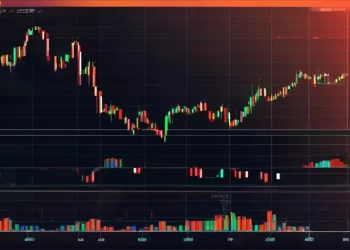Since its launch more than a month ago, Hong Kong’s virtual asset spot ETF has drawn increasing attention from institutional investors. Expert financial services consultant Chris Barford illustrates this noteworthy increase by citing a recent Ernst & Young poll that indicates institutional investors strongly prefer to increase their virtual asset allocations in the near future.
Despite the growing enthusiasm from institutional quarters, the ETF has been greeted with a noticeable lack of support from traditional banks. Barford principally relates this reluctance to the anticipated regulatory risks of complying with Know Your Customer (KYC) and anti-money laundering (AML) rules. In addition, the concern arises from an acknowledged need for more technical know-how in conventional financial establishments.
Concerns and Difficulties in the Banking Sector
Despite being on the market for a while, Hong Kong’s virtual asset spot ETF has never received support from traditional banks. This highlights a larger hesitation in the banking industry. Chris Barford, who plays a major role in financial services consulting in Hong Kong, explores the reasons for this seeming resistance in more detail.
He clarifies that conventional banks are facing a variety of issues, from the legal maze surrounding AML and KYC to the seeming shortage of staff members skilled in managing virtual asset transactions.
Furthermore, the general issue of a lack of talent is significant not only locally but also globally in the financial system. Barford emphasizes how important it is for established financial institutions to balance their legal and regulatory responsibilities with growing client expectations in the changing virtual asset market.
Future Trends and Institutional Interest in Hong Kong’s Spot ETF
According to Chris Barford’s insights, institutional investors are gradually readjusting their investing plans to include virtual assets as a feasible component. Citing the insightful results of the Ernst and Young poll, Barford highlights a discernible change in institutional attitude toward increased interaction with virtual assets over the next two to three years.
Big investors are considering allocating about 1% of their assets to virtual currencies if their total assets under management surpass $500 billion US. They understand that virtual currencies have the potential to yield substantial profits, even in a notoriously unpredictable market.
Simultaneously, conventional financial establishments are starting to pay close attention to the technology that underpins virtual assets, including its potential for simplifying payment, settlement, and custody procedures. Tokenization, shown by HSBC’s entry into Hong Kong’s tokenized gold offerings for individual investors, is a rapidly emerging trend expected to spread to other asset classes, including real estate.

























